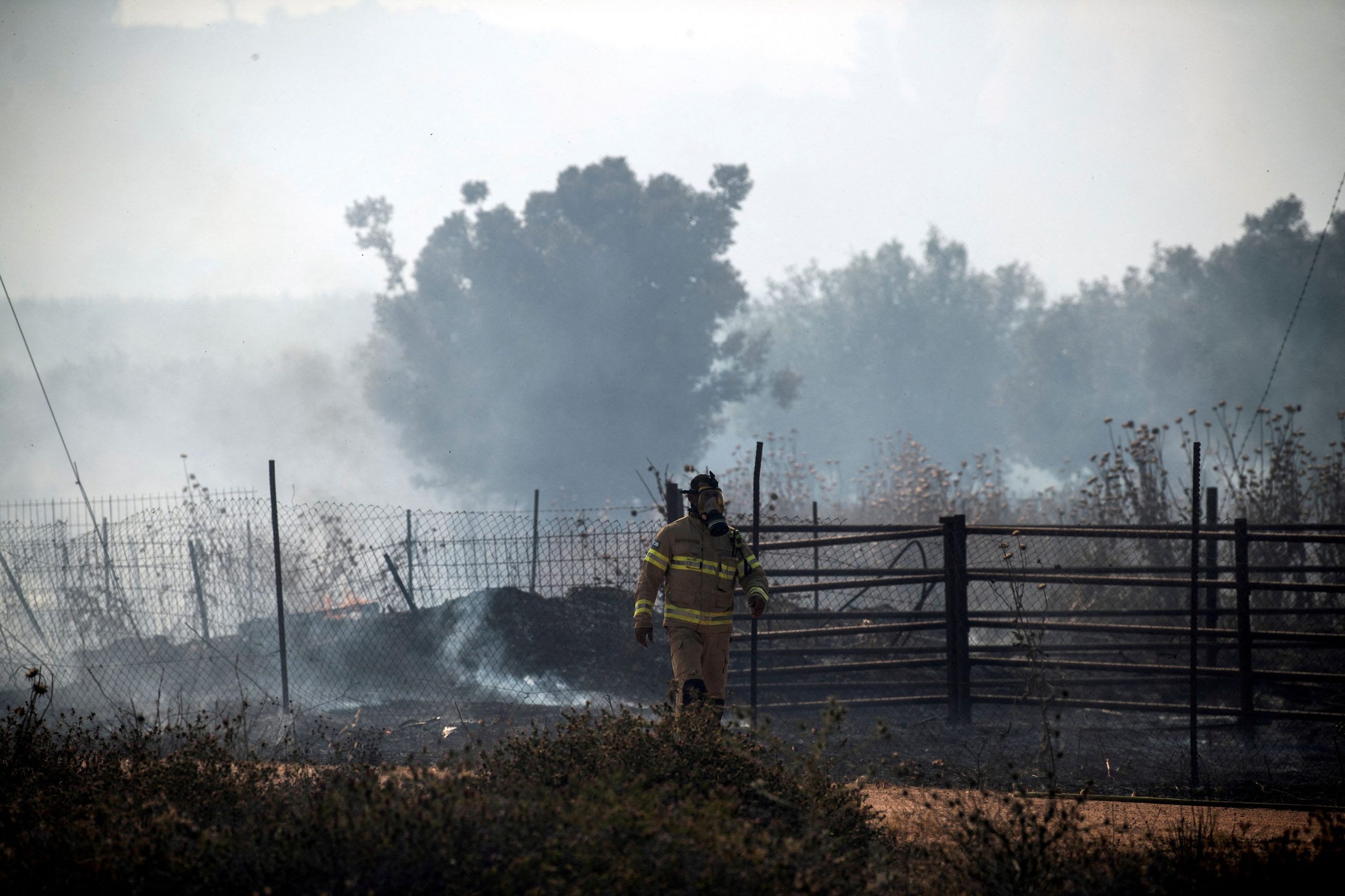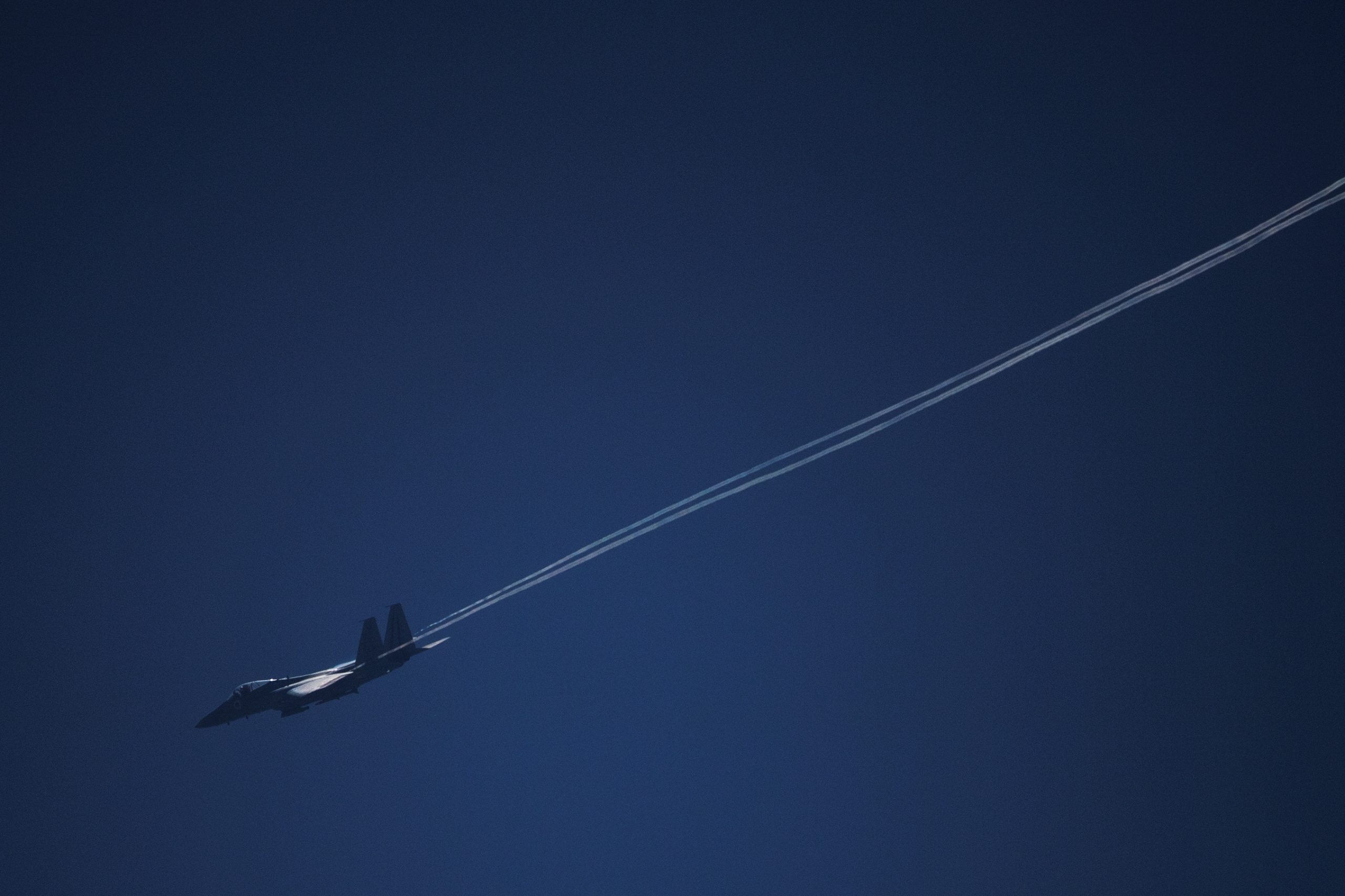
Escalating tensions between Israel and Hezbollah after the killing of the Lebanese group’s supreme leader, Talib Sami Abdullah, on Tuesday once again raised fears of a broader, all-out war in Lebanon after months of clashes between the two sides.
“Hezbollah is getting bolder, and I think the Israelis were surprised by that.”
Hezbollah, the powerful Lebanese movement backed by Iran, fired more than 200 missiles at Israel in retaliation on Wednesday, and also launched a large but smaller barrage on Thursday, as it vowed to intensify its attacks.
These developments are only the latest in an escalation of hostilities, which show that Hezbollah’s attacks on Israel are more ferocious and sophisticated. This tactical change in the scope of the Lebanese group’s attacks compared to the first weeks of the conflict caught the attention of many observers.
Following the October 7 Hamas-led attack on Israel and the subsequent war in Gaza, Hezbollah began skirmishing along Lebanon’s southern border in a show of solidarity with the Palestinians.
Since then, the Lebanese movement has demonstrated its ability to shoot down several Hermes 900 drones, fire anti-aircraft missiles at Israeli aircraft that it claims forced them to retreat, and even carry out a symbolic strike against an Iron Dome air defense unit.
“Hezbollah surprises the Israelis”
“Hezbollah has become bolder and I think the Israelis were surprised by that,” said Amal Saad, an expert on Hezbollah affairs and political lecturer at Cardiff University.
He added: “They know what it has, its arsenal, but they did not think it would have the courage to use it, at least not for Gaza.” eye middle east, Implying that Israel expects Hezbollah to reserve such weapons for an immediate war with Lebanon.
Experts say this escalation is likely linked to the political stalemate in the ceasefire negotiations in Gaza. On May 31, US President Joe Biden unveiled what he called a ceasefire plan that bears similarities to the proposal accepted by Hamas weeks ago. But Israel refuses to sign any proposal that would end the war permanently, which is what Hamas insists on.
Although the West and Israel hope that pressure on Hamas will prompt the Palestinian movement to back down on its demands, experts say Hezbollah is using its own tactics.
“The political situation and impasse we are facing at the moment means that the only way to have your voice heard is to show that you have advanced capabilities, without launching a final world war,” Mustada Asaad, a US-based weapons expert, told Middle East Eye. .
He even accepted the argument that the ongoing ceasefire negotiations in Gaza may have encouraged Hezbollah to exert more pressure.
He added, “Hezbollah linked the closure of this front to the end of the war in Gaza.” He added, “The idea is to pressure Israel to give up the proposal.”
“Hezbollah will begin displaying more of its weapons.”
For his part, Saad said that Hezbollah is trying to increase the price that Israel will have to pay if it does not sign an agreement with Hamas.
“This cost will be for the northern front to catch fire, for Hezbollah to be bolder in its attacks, to use more advanced weapons, and to begin showing off more of its weapons, such as the anti-aircraft weapons it has begun.” Emphasize the use of last week and this week.

An Israeli firefighter near smoke and fire after rockets were fired into Israel from Lebanon. (Image source: Reuters/Gil Eliyahu)
Drone and missile attacks carried out by Hezbollah sparked widespread fires in northern Israel in recent weeks, angering senior Israeli officials. Likewise, Israeli attacks in southern Lebanon burned large areas of land, with Israel using a medieval catapult.
Since Hezbollah and Israel launched a forty-day war in 2006, they have occasionally exchanged blows in a way aimed at containing any potential escalation.
During the current round of hostilities, Israeli airstrikes in Lebanon have killed more than 450 people, including at least 80 civilians. Meanwhile, Israel says 15 of its soldiers and 10 civilians were killed.
“We are prepared for any escalation”
The Lebanese movement has carried out more daring drone attacks in recent weeks, while Israel has struck deep into Lebanon and carried out several targeted missions.
Although this is the largest escalation since 2006, it remains within the boundaries of Hezbollah and Israel and has not yet ignited an all-out war.
According to Al-Assad, Hezbollah “has not given up everything yet,” and the organization’s actions remain a “framework for managing escalation.”
Qasim Kassir, an analyst close to Hezbollah, told Middle East Eye that the group changed the type of attacks it launches “first, in solidarity with Gaza and in response to Israeli attacks.”
Kashir added that while Hezbollah’s attacks send a message of deterrence to Israel, they are also intended to tell Israelis that “Hezbollah is prepared for any escalation.”
At the beginning of the war in Gaza, Hezbollah’s participation in the Solidarity Front focused largely on Israeli surveillance, which targeted fighters stationed near the border.
These operations cost the Lebanese movement dearly, as Israel was able to target groups of militants and kill a number of them in one day. The losses seemed painful for Hezbollah, whose forces had become more solid due to fighting in the Syrian war alongside President Bashar al-Assad.
“She learned from her mistakes.”
Asaad believes this was an early mistake that the team later corrected.
He added: “In the first weeks, Hezbollah fought as if it were fighting in Syria and suffered heavy losses because the doctrine it had in mind was comprehensive movements, which meant using operations at the brigade level.”
The Israelis easily discovered this and successfully targeted all groups. He added, “Hezbollah learned from its mistakes and reduced its tasks to teams consisting of two or three individuals.”
On the other hand, Saad believes that Hezbollah, along with the broader coalition of Middle Eastern states and armed groups backed by Iran known as the Axis of Resistance, has always had some sort of “contingency plan” for situations like war. in Gaza.


An Israeli warplane flies over the Israeli-Lebanese border (Source: Reuters/Gil Eliyahu)
He added: “I believe that Hezbollah deliberately began an anti-surveillance strategy in order to reach this point where they can launch attacks on various targets that go beyond surveillance, on military formations.”
Assad also stressed that while the disruption of Israeli border surveillance technologies facilitated Hezbollah’s ground movements, it was the group’s use of its newfound weapons, coupled with the use of Lebanon’s mountainous and forested geography, that allowed it to launch more precise attacks deeper into Israel.
According to him, the organization adapted “very well” to the circumstances against Israel. “Hezbollah knows that short-range attacks are very successful. “It’s technology integrated with the terrain,” he added.
“Able to return fire”
Recent reports in the Israeli media claim that Israel is seeking US assistance to prevent Hezbollah from escalating the conflict on the northern border.
In addition, the share price of the Israeli arms company Elbit Systems fell after Hezbollah succeeded in shooting down its drones over Lebanon. Experts believe these developments have heightened Israel’s concerns about its rival to the north, which is often seen as the world’s most powerful non-state actor.
“The Israelis have realized that on the other side of the border, they have an entity capable of responding with fire,” Assad said. He added, “This fact in itself is considered an achievement, because they are usually not accustomed to questioning their superiority or questioning the capabilities and technology on other frontiers.”
Saad said that the broader scope of Hezbollah’s attacks, both in terms of quantity and quality, is likely what prompted Israel to assassinate Talib Sami Abdullah.
With the organization’s keenness to maintain pressure on Israel, as well as to continue its deterrent attacks, escalation that remains within the unofficial rules of engagement may be the only way forward.
Al-Assad said: “They must intensify their efforts after the assassination, otherwise deterrence will be just a term that does not apply.”

“Hipster-friendly coffee fanatic. Subtly charming bacon advocate. Friend of animals everywhere.”





More Stories
F-16 crashes in Ukraine – pilot dies due to his own error
Namibia plans to kill more than 700 wild animals to feed starving population
Endurance test for EU-Turkey relations and Ankara with Greece and Cyprus